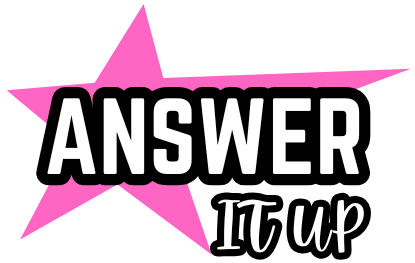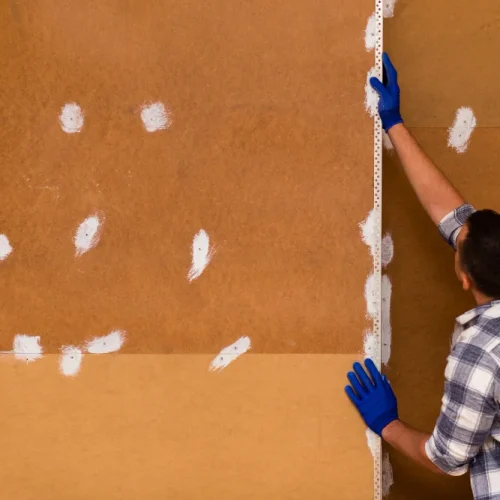Have you ever peeled a poster, sticker, or hook from your wall only to discover a stubborn patch of sticky residue glaring back at you? It’s frustrating—especially if you rent and worry about losing your deposit, or if you’ve just redecorated and don’t want an unsightly blemish ruining the fresh look. Adhesive on walls is one of those sneaky household annoyances that seems minor, yet it can quickly turn into a bigger headache if not handled properly.
Over the years, I’ve dealt with everything from leftover tape on my flat’s bedroom wall to the residue from command strips that were supposed to be “damage-free.” I’ve tested different methods—from vinegar to commercial adhesive removers—and also consulted with professional painters and decorators who deal with this problem routinely. In this guide, I’ll share both tried-and-tested DIY solutions and expert insights to help you remove adhesive cleanly and safely, while protecting your walls.
Why Adhesive Sticks So Stubbornly
Adhesives are designed to bond strongly to surfaces. Whether it’s glue, tape, or wall hooks, the chemical makeup of these adhesives allows them to grip porous surfaces like painted plaster or drywall. According to the Adhesive and Sealant Council, adhesives work by forming molecular bonds with the surface, which explains why they don’t just peel off neatly.
But here’s the good news: not all adhesives are the same, and the right technique can break those bonds without harming your paint or wallpaper.
Things to Consider Before You Start
Before you attack that patch of glue with the first product you find under your sink, pause. A hasty approach could strip your paint, damage your wallpaper, or even dent your plaster. Here are three things professionals advise:
- Identify the wall type → Is it painted drywall, plaster, or wallpaper? Each reacts differently to heat, moisture, and chemicals.
- Test in an inconspicuous spot → Always try your method in a small, hidden corner first.
- Use the gentlest method first → Start with low-risk techniques before moving on to stronger solvents.
As professional painter James Carter (London Painters & Decorators) told me: “The biggest mistake people make is using too much force too quickly. Patience is key—you want to weaken the adhesive, not the wall.”
Step-by-Step Methods to Remove Adhesive from Walls
1. Heat Method (Best for Tape and Sticky Residues)
Heat weakens adhesives, making them easier to peel away.
- What you’ll need: Hairdryer or heat gun, plastic scraper or old credit card.
- How to do it:
- Hold the hairdryer a few inches from the adhesive and heat it for 30–60 seconds.
- Gently lift the edge using a scraper.
- Wipe the softened residue with a damp cloth.
👉 Personal note: I once removed three command hooks from my kitchen wall this way. It worked beautifully on painted surfaces, though on wallpaper, I had to be extra gentle to avoid peeling the paper itself.
2. Soap and Water (Gentle and Safe for Most Walls)
This works surprisingly well for light adhesives.
- What you’ll need: Warm water, mild dish soap, sponge.
- How to do it:
- Mix a few drops of dish soap in warm water.
- Soak a sponge and press it onto the adhesive for 1–2 minutes.
- Gently rub until the adhesive softens.
💡 According to Consumer Reports, water-based solutions are the safest starting point for painted walls, as they avoid introducing harsh chemicals unnecessarily.
3. Vinegar Solution (Eco-Friendly and Effective)
Vinegar works as a natural adhesive solvent.
- What you’ll need: White vinegar, spray bottle, soft cloth.
- How to do it:
- Spray vinegar directly onto the adhesive.
- Let it sit for 10–15 minutes.
- Rub gently with a cloth.
👉 This method worked well when I removed the residue from double-sided tape in my study. It took two applications, but the adhesive eventually dissolved without harming the paint.
4. Rubbing Alcohol or Isopropyl Alcohol (For Tougher Jobs)
Alcohol breaks down adhesive bonds effectively.
- What you’ll need: Isopropyl alcohol (70% or higher), cotton pad.
- How to do it:
- Dab alcohol onto the adhesive with a cotton pad.
- Wait 2–3 minutes.
- Wipe away softened residue.
⚠️ Expert tip from decorator Sarah Mitchell (Brighton Home Renovations): “Alcohol is effective but can dull certain paint finishes. Always test first.”
5. Commercial Adhesive Removers (When DIY Isn’t Enough)
Products like Goo Gone or WD-40 are designed to dissolve adhesives.
- How to do it:
- Apply a small amount onto a cloth (never directly onto the wall).
- Rub gently in circular motions.
- Wipe clean with soapy water afterwards.
💡 Many professionals recommend commercial removers for extremely stubborn adhesives, but they should be a last resort due to their chemical strength.
Special Cases: Adhesive on Different Surfaces
Painted Walls
- Use soap, water, or vinegar first.
- Avoid harsh chemicals that can strip paint.
Wallpapered Walls
- Use minimal liquid; too much moisture can cause bubbling.
- Heat method is usually safest.
Wooden Surfaces
- Alcohol or vinegar works well, but test to avoid discolouration.
Glass or Tiles
- Adhesives come off easily with alcohol or commercial removers.
Preventing Future Adhesive Nightmares
As they say, prevention is better than cure. Here are a few ways to avoid sticky surprises in the future:
- Use removable adhesive strips from trusted brands (though still test before committing to large areas).
- Apply painter’s tape before sticking hooks or posters; this creates a protective barrier.
- Choose wall-friendly alternatives like suction hooks for tiles or magnetic strips on metal surfaces.
FAQs
Q: Can I use nail polish remover (acetone) to remove adhesive?
A: Acetone is powerful but risky—it can strip paint and damage finishes. Only use it on non-porous surfaces like glass or tiles.
Q: Will adhesive removers damage my paint?
A: If misused, yes. Always test in a hidden spot first.
Q: How long should I apply heat before peeling adhesive?
A: Usually 30–60 seconds is enough. Avoid overheating to prevent blistering paint.
Q: What if adhesive has been stuck for years?
A: Start with gentle methods and progress to stronger ones. Older adhesives may need multiple treatments.
Final Thoughts
Removing adhesive from walls doesn’t have to be a stressful, paint-stripping ordeal. With a little patience—and the right method for your surface—you can restore your walls to their clean, smooth finish. Personally, I’ve found that a hairdryer combined with a soft cloth often does the trick, but tougher jobs may need vinegar or even a commercial remover.
The key takeaway is simple: start gently, test carefully, and only escalate if necessary.
Have you battled with stubborn wall adhesive before? Share your experience below—I’d love to hear which method worked best for you.
References & Further Reading:
- Adhesive and Sealant Council – How Adhesives Work
- Consumer Reports – Tips for Cleaning Walls
- Interviews with James Carter (London Painters & Decorators) and Sarah Mitchell (Brighton Home Renovations)
Read Also: Calling the Police if Child Refuses to Go to School









